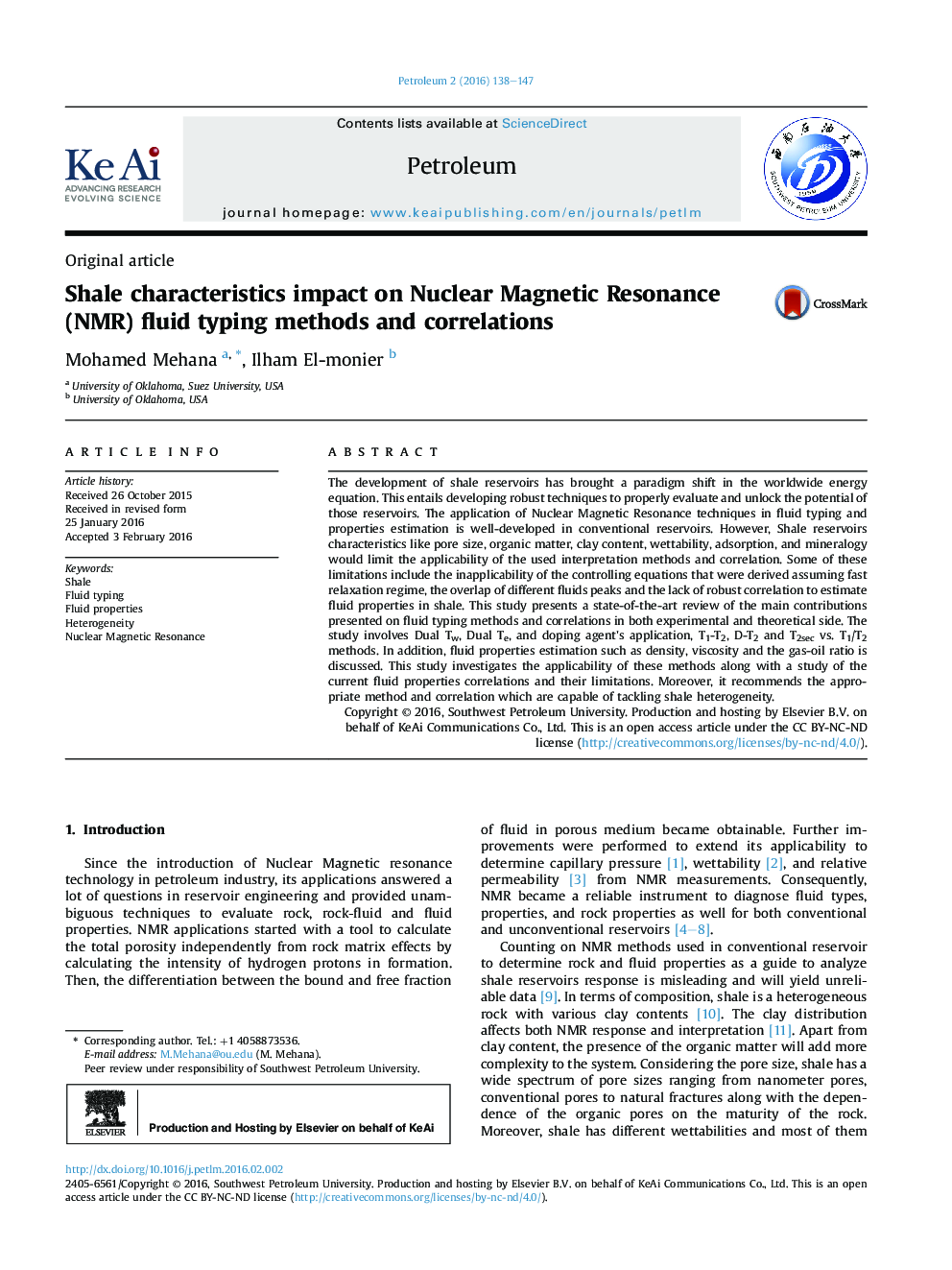| Article ID | Journal | Published Year | Pages | File Type |
|---|---|---|---|---|
| 852900 | Petroleum | 2016 | 10 Pages |
The development of shale reservoirs has brought a paradigm shift in the worldwide energy equation. This entails developing robust techniques to properly evaluate and unlock the potential of those reservoirs. The application of Nuclear Magnetic Resonance techniques in fluid typing and properties estimation is well-developed in conventional reservoirs. However, Shale reservoirs characteristics like pore size, organic matter, clay content, wettability, adsorption, and mineralogy would limit the applicability of the used interpretation methods and correlation. Some of these limitations include the inapplicability of the controlling equations that were derived assuming fast relaxation regime, the overlap of different fluids peaks and the lack of robust correlation to estimate fluid properties in shale. This study presents a state-of-the-art review of the main contributions presented on fluid typing methods and correlations in both experimental and theoretical side. The study involves Dual Tw, Dual Te, and doping agent's application, T1-T2, D-T2 and T2sec vs. T1/T2 methods. In addition, fluid properties estimation such as density, viscosity and the gas-oil ratio is discussed. This study investigates the applicability of these methods along with a study of the current fluid properties correlations and their limitations. Moreover, it recommends the appropriate method and correlation which are capable of tackling shale heterogeneity.
